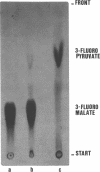Abstract
Bacillus subtilis cells grown in yeast extract medium accumulated 3-fluoro-l-erythro-[1,2-14C2]malate more than 30-fold from the surrounding medium. No metabolic products derived from 3-fluoro-l-erythro-malate could be detected in these cells. l-Malate competitively inhibited transport of 3-fluoro-l-erythro-malate. This malate analogue was itself a competitive inhibitor of l-malate uptake. Cells that had been grown in yeast extract supplemented with 5 mM l-malate showed a 10-fold increased affinity towards 3-fluoro-l-erythro-malate relative to cells grown in yeast extract medium with no added malate. Our results suggest that two transport systems for l-malate can be induced in B. subtilis. The first of these systems seems to effect uptake of C4-dicarboxylates (l-malate, succinate, and fumarate) in yeast extract medium. The second transport system (or possibly a modification of the first transport system) seems to be induced by addition of l-malate to this medium and is also functioning in malate minimal medium.
Full text
PDF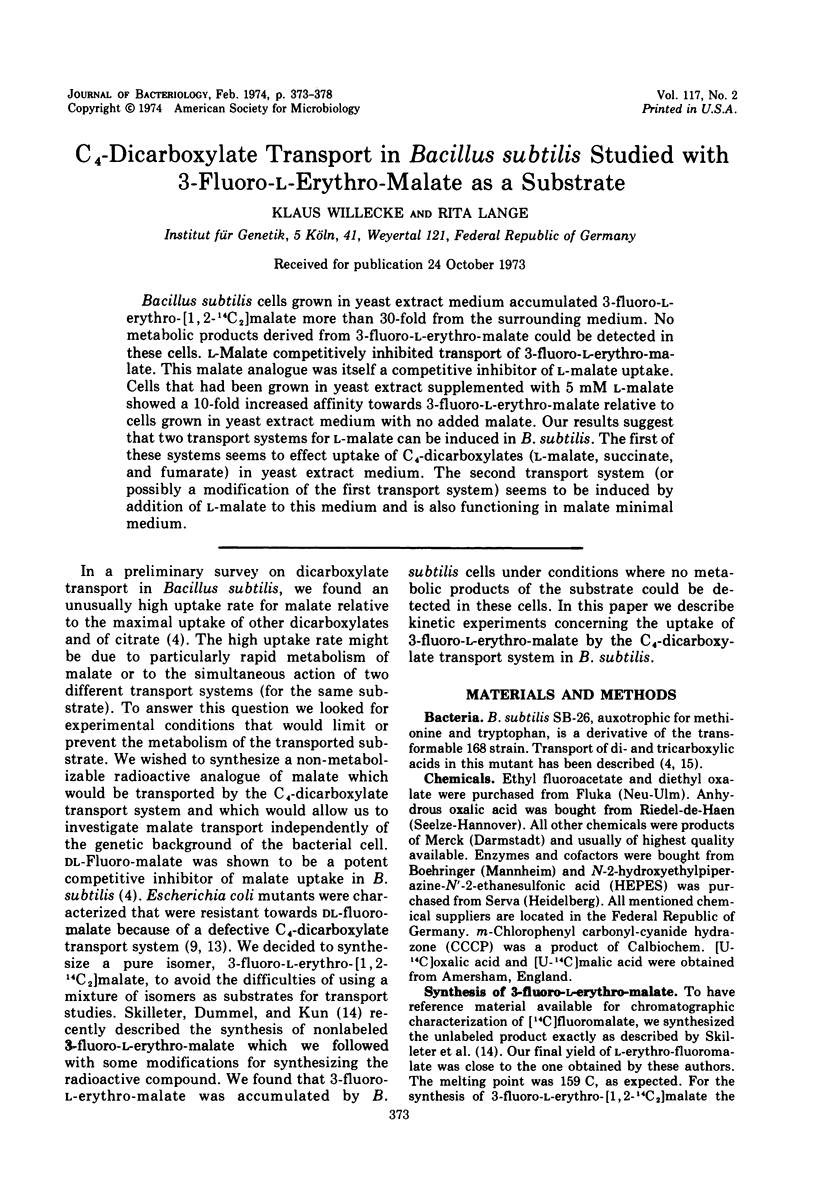
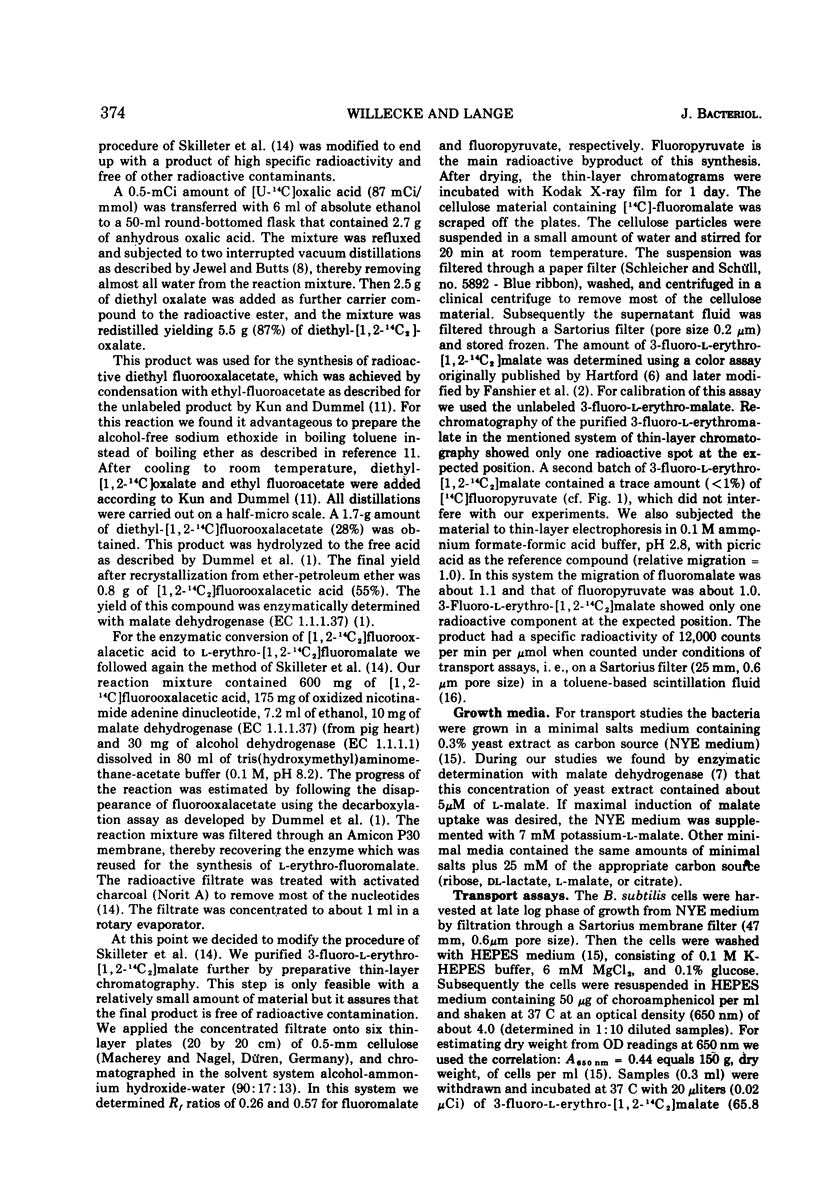
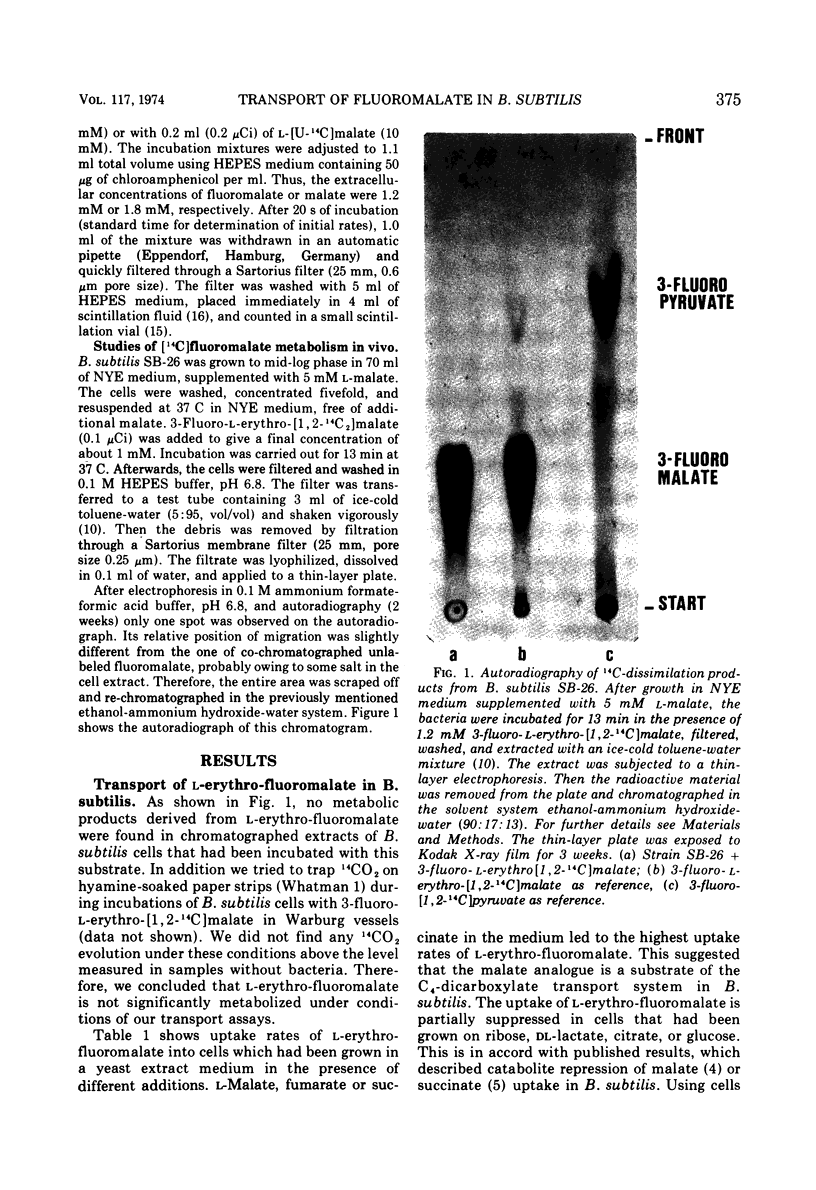
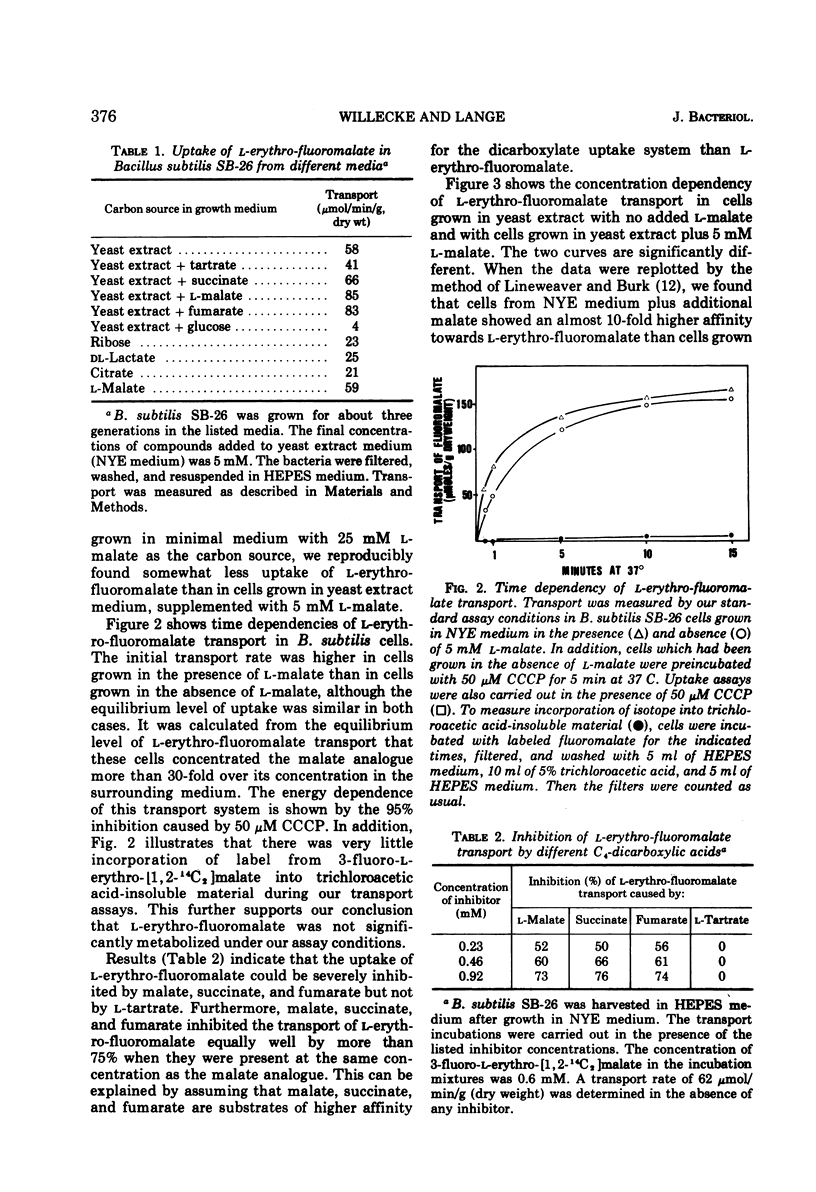
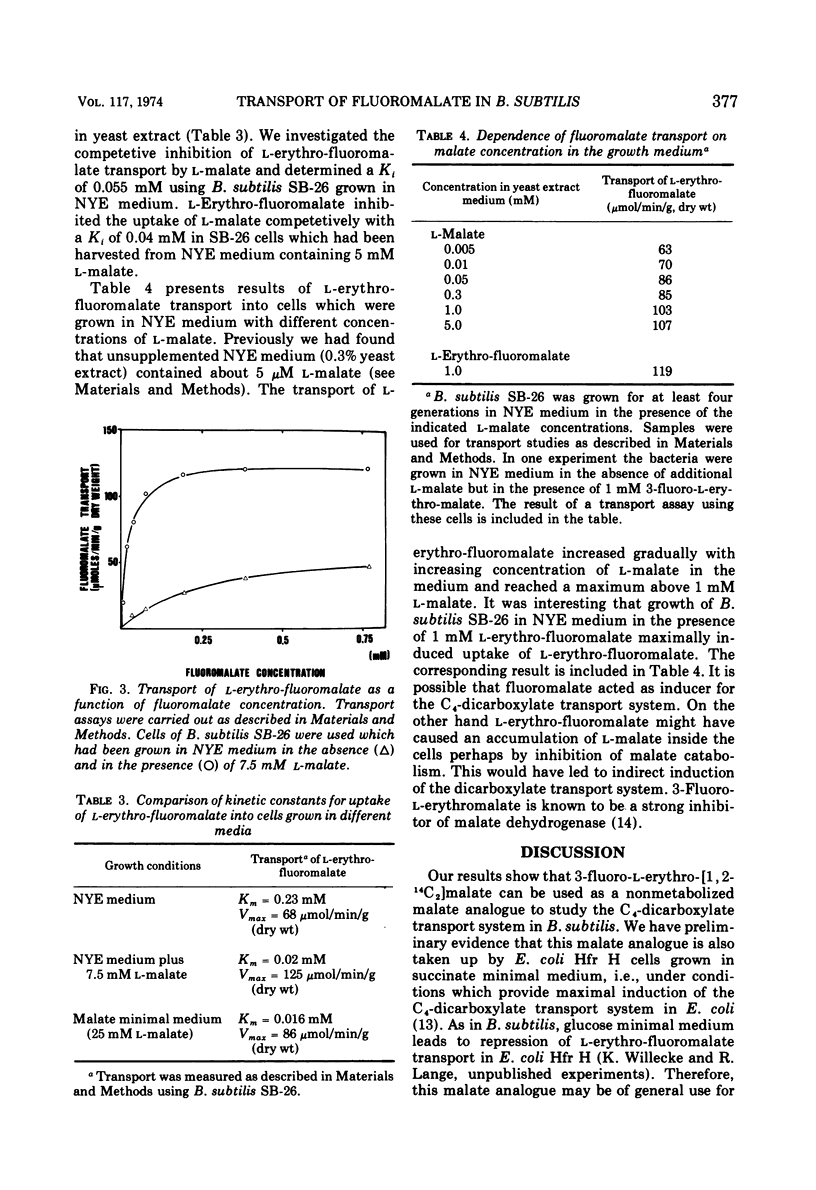
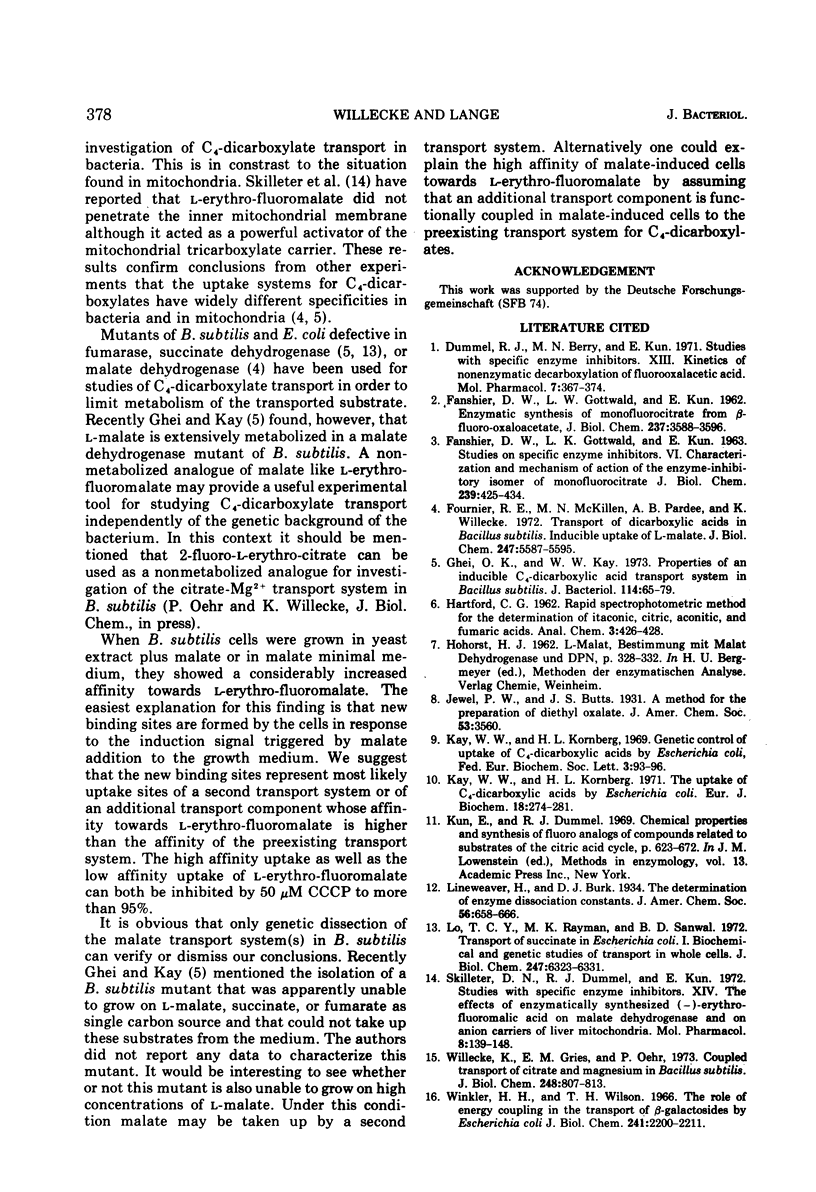
Images in this article
Selected References
These references are in PubMed. This may not be the complete list of references from this article.
- Dummel R. J., Berry M. N., Kun E. Studies with specific enzyme inhibitors. 13. Kinetics of nonenzymatic decarboxylation of fluorooxalacetic acid. Mol Pharmacol. 1971 Jul;7(4):367–374. [PubMed] [Google Scholar]
- FANSHIER D. W., GOTTWALD L. K., KUN E. STUDIES ON SPECIFIC ENZYME INHIBITORS. VI. CHARACTERIZATION AND MECHANISM OF ACTION OF THE ENZYME-INHIBITORY ISOMER OF MONOFLUOROCITRATE. J Biol Chem. 1964 Feb;239:425–434. [PubMed] [Google Scholar]
- Fournier R. E., McKillen M. N., Pardee A. B., Willecke K. Transport of dicarboxylic acids in Bacillus subtilis. Inducible uptake of L-malate. J Biol Chem. 1972 Sep 10;247(17):5587–5595. [PubMed] [Google Scholar]
- Ghei O. K., Kay W. W. Properties of an inducible C 4 -dicarboxylic acid transport system in Bacillus subtilis. J Bacteriol. 1973 Apr;114(1):65–79. doi: 10.1128/jb.114.1.65-79.1973. [DOI] [PMC free article] [PubMed] [Google Scholar]
- Kay W. W., Kornberg H. L. Genetic control of the uptake of C(4)-dicarboxylic acids by Escherichia coli. FEBS Lett. 1969 Apr;3(2):93–96. doi: 10.1016/0014-5793(69)80105-5. [DOI] [PubMed] [Google Scholar]
- Kay W. W., Kornberg H. L. The uptake of C4-dicarboxylic acids by Escherichia coli. Eur J Biochem. 1971 Jan;18(2):274–281. doi: 10.1111/j.1432-1033.1971.tb01240.x. [DOI] [PubMed] [Google Scholar]
- Lo T. C., Rayman M. K., Sanwal B. D. Transport of succinate in Escherichia coli. I. Biochemical and genetic studies of transport in whole cells. J Biol Chem. 1972 Oct 10;247(19):6323–6331. [PubMed] [Google Scholar]
- Skilleter D. N., Dummel R. J., Kun E. Studies with specific enzyme inhibitors. XIV. The effects of enzymatically synthesized (-)-erythro-fluoromalic acid on malate dehydrogenase and on anion carriers of liver mitochondria. Mol Pharmacol. 1972 Mar;8(2):139–148. [PubMed] [Google Scholar]
- Willecke K., Gries E. M., Oehr P. Coupled transport of citrate and magnesium in Bacillus subtilis. J Biol Chem. 1973 Feb 10;248(3):807–814. [PubMed] [Google Scholar]
- Winkler H. H., Wilson T. H. The role of energy coupling in the transport of beta-galactosides by Escherichia coli. J Biol Chem. 1966 May 25;241(10):2200–2211. [PubMed] [Google Scholar]



